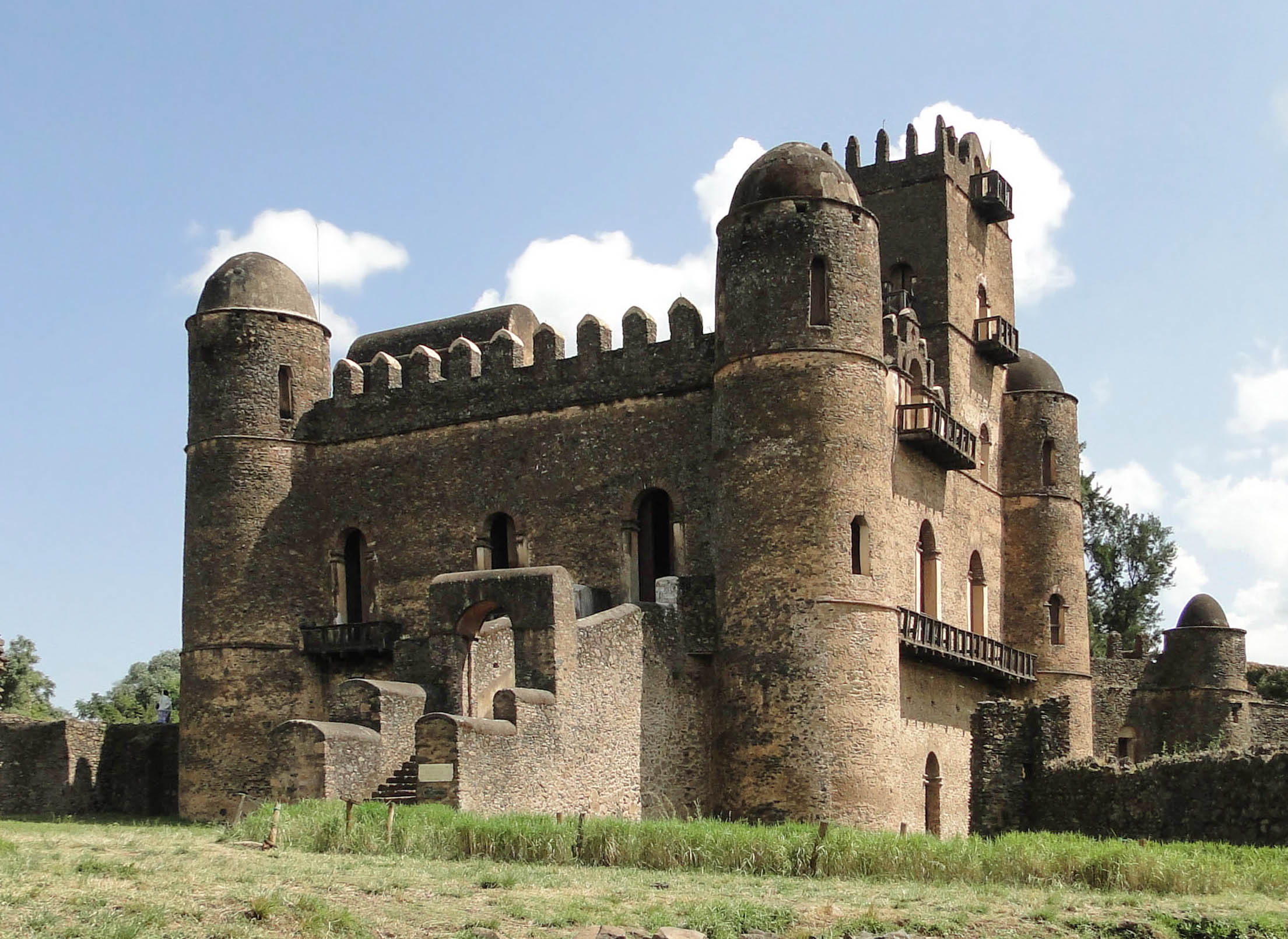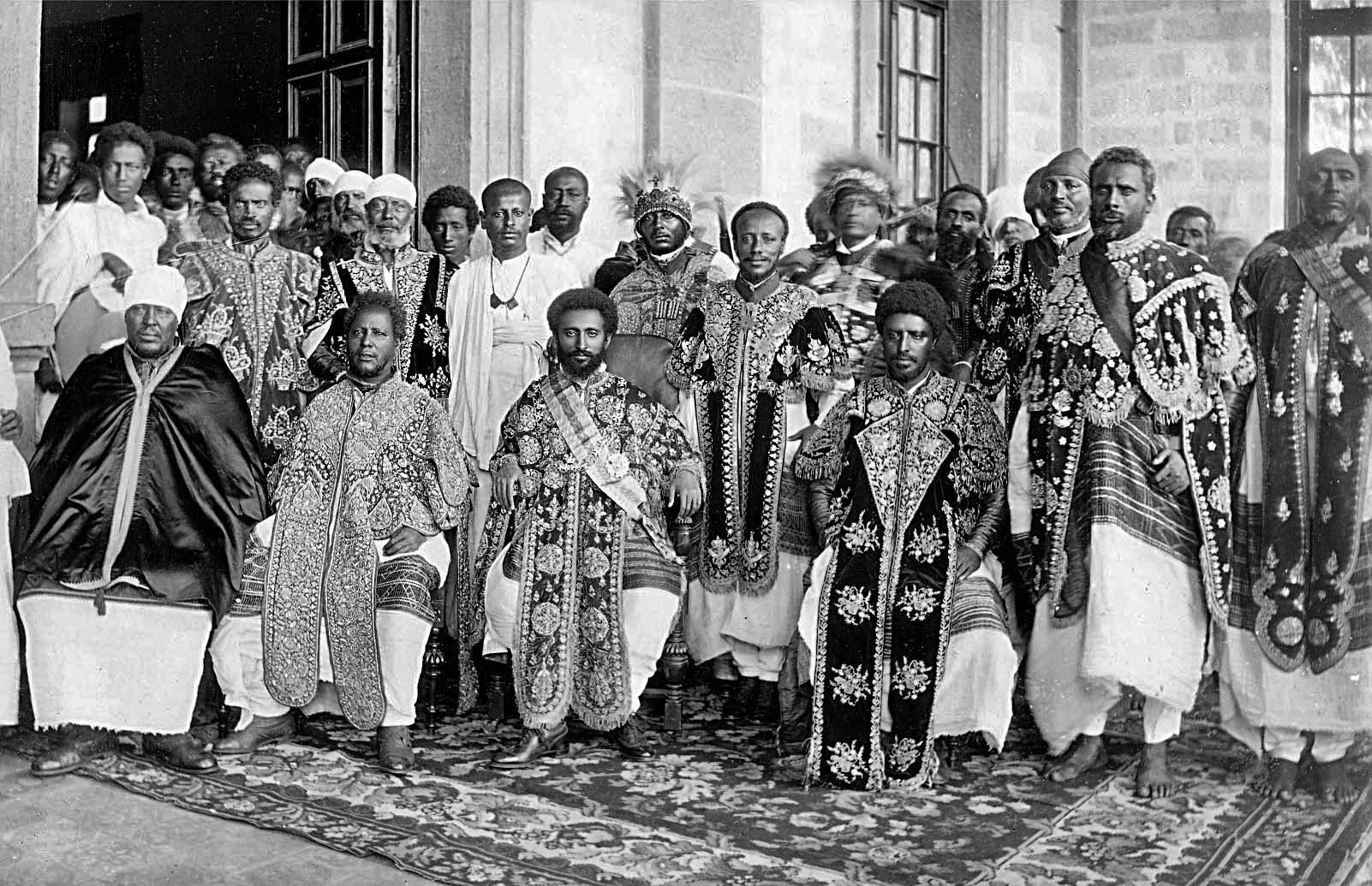|
Hawarya Krestos
Hawarya Krestos (died 4 May 1700) was a member of the Gondarine court and royal chronicler. Biography Hawarya Krestos belonged to the higher clergy ( Liqawant) in the court of the Gondarine rulers and to the royal counsellors. As such, he held the title of Azzaz. Towards the end of the reign of Emperor Yohannes I, Hawarya Krestos was also granted the title of Tsehafi Taezaz and would author the Emperor's Chronicles. He also documented the church councils summoned by Emperor Yohannes I to resolve the doctrinal differences between the theological parties of Qabat and Tewahedo. Yohannes I died on 19 July 1682 and Iyasu ascended the throne, with the serag masare Malkea Krestos putting the crown on his head. The Tsehafi Taezaz's (Hawarya Krestos and Walda Haymanot) sent sealed letters to various countries to announce the death of Yohannes I, and that the reign of his son Iyasu I has begun. On 19 January 1694, during the ceremony of Epiphany, Hawarya Krestos who was well versed ... [...More Info...] [...Related Items...] OR: [Wikipedia] [Google] [Baidu] |
Gondar
Gondar, also spelled Gonder (Amharic: ጎንደር, ''Gonder'' or ''Gondär''; formerly , ''Gʷandar'' or ''Gʷender''), is a city and woreda in Ethiopia. Located in the North Gondar Zone of the Amhara Region, Gondar is north of Lake Tana on the Lesser Angereb River and southwest of the Simien Mountains. , Gondar has an estimated population of 443,156. Gondar previously served as the capital of both the Ethiopian Empire and the subsequent Begemder Province. The city holds the remains of several royal castles, including those in the Fasil Ghebbi UNESCO World Heritage Site for which Gondar has been called the " Camelot of Africa". History Origins The term Gondar was first mentioned during the reign of Amda Seyon I as the name of a regiment of soldiers stationed (likely in Wegera) to guard nearby trade routes and control a restive population. In 1636, Emperor Fasilides selected Gondar as his '' katama'' (royal camp). Situated about 35 km due north of Lake Tana in t ... [...More Info...] [...Related Items...] OR: [Wikipedia] [Google] [Baidu] |
Chronicle
A chronicle (, from Greek ''chroniká'', from , ''chrónos'' – "time") is a historical account of events arranged in chronological order, as in a timeline. Typically, equal weight is given for historically important events and local events, the purpose being the recording of events that occurred, seen from the perspective of the chronicler. A chronicle which traces world history is a universal chronicle. This is in contrast to a narrative or history, in which an author chooses events to interpret and analyze and excludes those the author does not consider important or relevant. The information sources for chronicles vary. Some are written from the chronicler's direct knowledge, others from witnesses or participants in events, still others are accounts passed down from generation to generation by oral tradition.Elisabeth M. C. Van Houts, ''Memory and Gender in Medieval Europe: 900–1200'' (Toronto; Buffalo: University of Toronto Press, 1999), pp. 19–20. Some used writ ... [...More Info...] [...Related Items...] OR: [Wikipedia] [Google] [Baidu] |
Plural
In many languages, a plural (sometimes list of glossing abbreviations, abbreviated as pl., pl, , or ), is one of the values of the grammatical number, grammatical category of number. The plural of a noun typically denotes a quantity greater than the default quantity represented by that noun. This default quantity is most commonly one (a form that represents this default quantity of one is said to be of ''singular'' number). Therefore, plurals most typically denote two or more of something, although they may also denote fractional, zero or negative amounts. An example of a plural is the English word ''boys'', which corresponds to the singular ''boy''. Words of other types, such as verbs, adjectives and pronouns, also frequently have distinct plural forms, which are used in agreement (linguistics), agreement with the number of their associated nouns. Some languages also have a dual (grammatical number), dual (denoting exactly two of something) or other systems of number categories. ... [...More Info...] [...Related Items...] OR: [Wikipedia] [Google] [Baidu] |
Yohannes I
Yohannes I (), also known as Yohannes the Righteous (Ge'ez: ጻድቁ ዮሐንስ), throne name A'ilaf Sagad (Ge'ez: አእላፍ ሰገድ; 1640 – 19 July 1682) was Emperor of Ethiopia from 1667 to 1682, and a member of the Solomonic dynasty. He was the fourth son of Fasilides. Yohannes was appointed '' nəgusä nägäst'' by a council of the senior dignitaries of the Empire, at the encouragement of the noble Blattengeta Malka Krestos. The council then imprisoned the other sons of Fasilides on Mount Wehni, continuing the practice Fasilides had revived. Ancestry Yohannes was the eldest son of Emperor Fasilides and succeeded him 1662. Reign According to G.W.B. Huntingford, Yohannes spent much of his reign campaigning, stating that 6 of the 11 itineraries he reproduced were military expeditions. Three of these were against the Agaw in Gojjam, and Agawmeder, one against the Oromo, and two punitive expeditions to the area around Mount Ashgwagwa— Angot and Lasta—to ... [...More Info...] [...Related Items...] OR: [Wikipedia] [Google] [Baidu] |
Tsehafi Taezaz
Until the end of the Ethiopian monarchy in 1974, there were two categories of nobility in Ethiopia and Eritrea. The Mesafint ( , modern transcription , singular መስፍን , modern , "prince"), the hereditary royal nobility, formed the upper echelon of the ruling class. The Mekwanint ( , modern , singular መኰንን , modern or , "officer") were the appointed nobles, often of humble birth, who formed the bulk of the aristocracy. Until the 20th century, the most powerful people at court were generally members of the ''Mekwanint'' appointed by the monarch, while regionally, the ''Mesafint'' enjoyed greater influence and power. Emperor Haile Selassie greatly curtailed the power of the ''Mesafint'' to the benefit of the ''Mekwanint'', who by then were essentially coterminous with the Ethiopian government. The ''Mekwanint'' were officials who had been granted specific offices in the Abyssinian government or court. Higher ranks from the title of ''Ras'' descending through to ''B ... [...More Info...] [...Related Items...] OR: [Wikipedia] [Google] [Baidu] |


